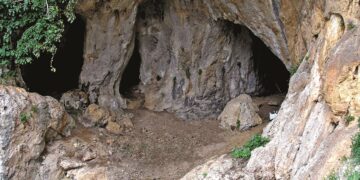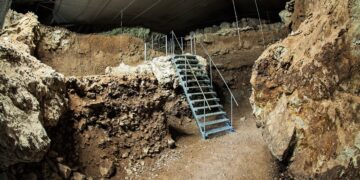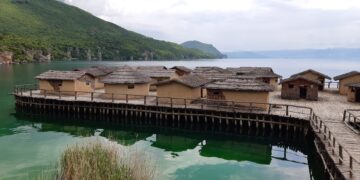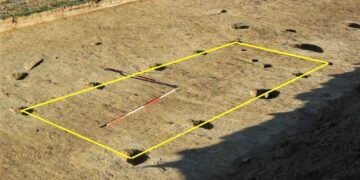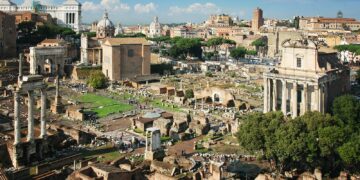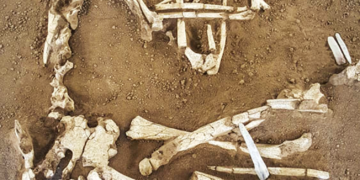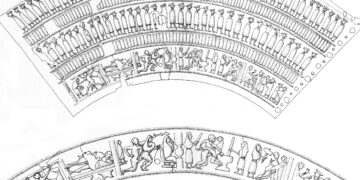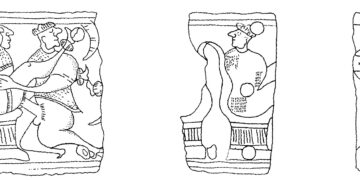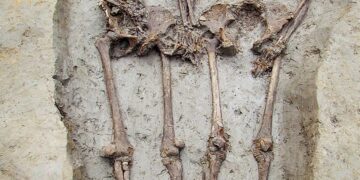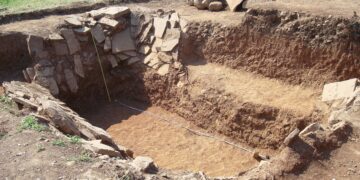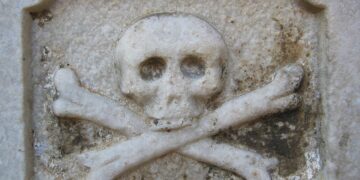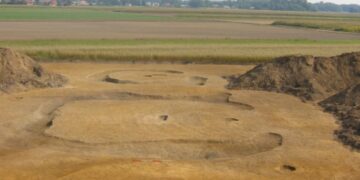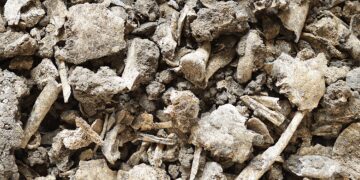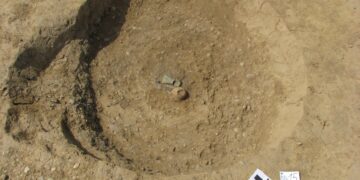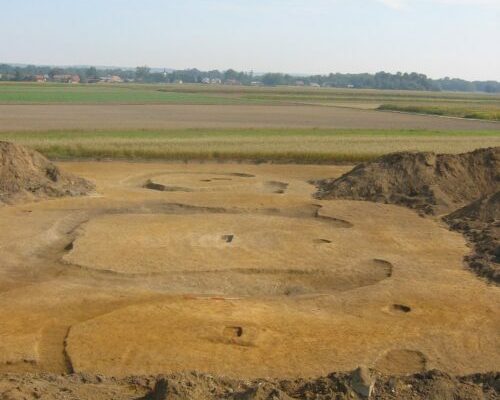When the territory of the western Pannonian plain was integrated into the Roman Empire in the first century AD, numerous political, economic and cultural changes took place. Slowly the old settlements systems were abandoned, a road network was created and the old inhabitants became with every generation more Romanized. It happened often that inscriptions on tombstones celebrated deceased that were roman citizens while their parents still had Celtic names. Especially dramatic were the changes in burial rites of common people – not only new material culture was introduced, but also the burial architecture changed dramatically – tumuli appeared again.
In the Pannonian plain, due to the lack of suitable stones, tumuli were created with the excavation of a ditch around the grave and the subsequent deposition of the excavated earth on the grave. The deceased were often cremated on the spot itself – the funeral pyre was erected above or in the grave-pit and the deceased were cremated with their attire. Later they were just swept into one corner of the pit while ceramic grave goods were positioned into the other. Looking at the ritual not much effort was invested and the grave goods were also modest, but the creation of the tumulus above the burial was a massive task that involved numerous individuals and long hours of work. With this communal effort, the friends and relatives changed dramatically the landscape and created numerous manufactured points of memory where ancestors were worshipped.

